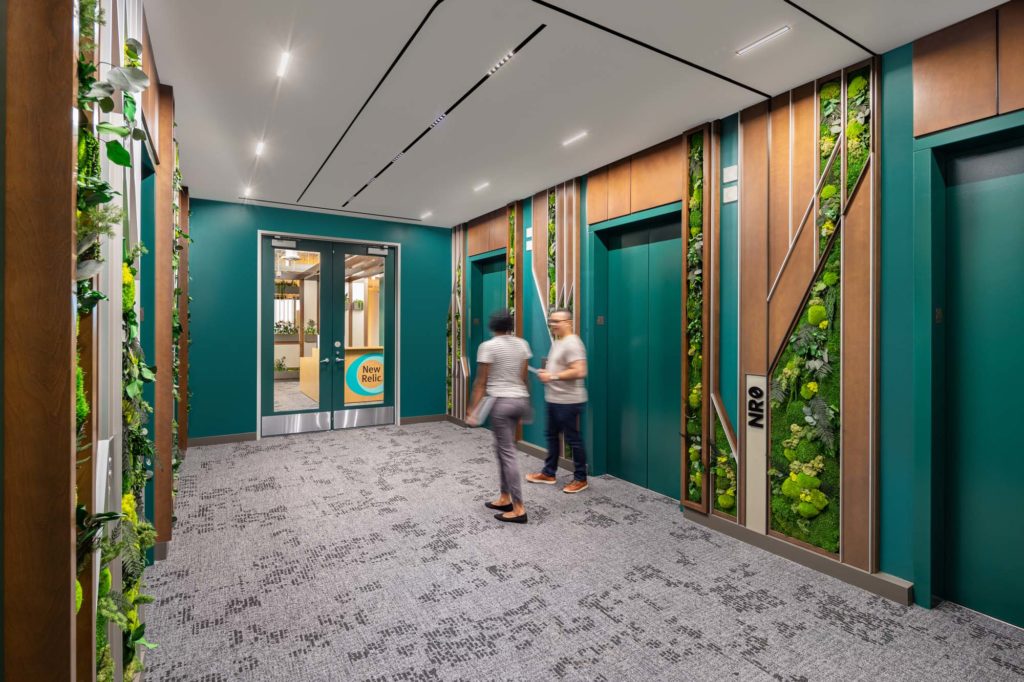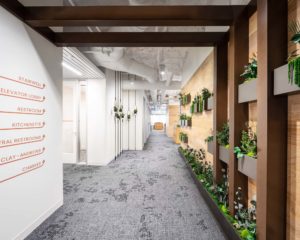Restaurant Development + Design: KFC revamps historical first location
KFC started as a small café in North Corbin, Ky., over 50 years ago. Today, the Sanders Café, owned and operated by JRN, Inc., pays homage to the chain. It’s a restaurant and museum that is on the National Register of Historic Places.
Read more with Restaurant Development + Design here.
NELSON Worldwide Announces New Senior Vice President and Managing Director
Award-winning architecture design and strategy firm NELSON Worldwide has named Haril A. Pandya as senior vice president and managing director of the Boston office. Read more here.
Architecture Magazine: Building a circular economy
Sustainability is no longer just a buzzword, it is now an essential consideration across the board with the construction industry at the forefront.
Teammates Cara Brochin and Brian Lachat discussed NELSON’s sustainability practices, especially in our work with Bearings Bike Works in Atlanta, Georgia. Read more with Architecture Magazine here.
Yahoo Finance: NELSON Worldwide Integrates Swivel’s 3D Visualization Technology
Urban Oasis
Tucked within San Francisco’s charming Telegraph Hill neighborhood and just below the iconic Coit Tower are a series of hidden steps that are truly worth the climb. Dating back to the 1900’s, the Filbert and Greenwich Steps weave past some of the city’s oldest houses and best-kept secret gardens (with plenty of history). A combination of wood, metal and brick segments of the stairs meander up through the steep hillside, surrounded by charming architecture and lush gardens (even in January), all inaccessible by car. Going up the Filbert Steps leads you to Coit Tower with 360 degree views of the city. Taking the Greenwich Steps back down towards the Embarcadero, you will quickly hear, then eventually see, the wild parrots of Telegraph Hill. This flock of tropical birds is a delightful surprise and only adds to the wanderlust of this true urban oasis. Climbing and descending over 800 steps, this architectural feat may not be easy, but you’ll find plenty of reasons to stop and take in the view, while you catch your breath.
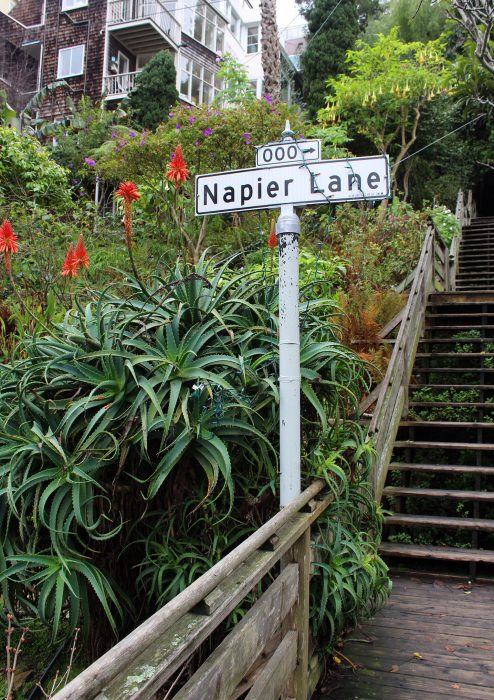

In Memoriam Of The Traditional Headquarters
Let’s hold a moment of silence for the traditional headquarters space. Born in at the turn of the 20th Century, the headquarters life came to an end after battling to survive in a millennial-driven, technology dominated, flexible workplace environment. Prior to the first technology boom in the late 1990’s and early 2000’s, it was rare to find a fortune 500 company that didn’t have an elaborate and sprawling campus that served as the organization’s corporate headquarters. Housed within these walls were generally all of the administration functions of the business including, marketing, human resources, IT and C-Suite executives. Today, however, thanks to the rising use of technology and remote locations, headquarters are irrelevant. In fact, they’re dead.
“Headquarters can be wherever you want and need them to be. In the past, the headquarters used to be the place where ideas were bred and new talent wanted to be. Now, companies are discovering that if you want the best talent, go to where they are,” said Larry Mufson, Managing Principal of The Mufson Partnership, A NELSON Company.
What’s driving this change? Costs and Millennials. The financial crisis of 2008 forced many companies to look at one of their largest expenses, real estate. In order to cut costs and keep relatively the same amount of productivity, many companies downsized their headquarters and larger hub offices and increased the utilization of remote and telework locations. For millennials looking to control when and how they work, the rise of on-demand services like Uber and Hourly Nerd provided the flexibility they needed without being tied to a specific location.
Headquarters spaces are now a costly investment that aren’t yielding the returns they once did. They are no longer a final destination, but a journey that propels a company’s culture forward and flows to the rest of the organization and locations.
Companies such as The Tie Bar are embracing the “headless” headquarters movement. Located in Chicago, IL, the online men’s retail shop wanted to bring their online personality and inventory into a physical environment while also providing a space for employees to work. Their final design solution reflected their upscale urban gentlemen’s club persona, provided space for product and samples, and also offered space for their employees to work, meet and socialize.
Multi-national companies such as NELSON have also embraced headless headquarters. We have 25 locations across the U.S., but none of them are the headquarters.
“Our people make our organization outstanding and prominent, not a location. Within each location, we’ve empowered the individuals there to embody and reflect the mission, values and culture overall. Headquarters for us is an attitude and mindset that is reflected at every level of the organization. What good is a major physical location that is overly grand and opulent if the same values and culture aren’t reflected in other locations?” Said John “Ozzie” NELSON, Chairman and CEO of NELSON.
As the way we work continues to evolve and change, so will the office spaces we inhabit. The headquarters was once the crowning achievement of an organization and a testament to its growth and influence. Today, we bury the space and in a way the idea behind it, but welcome in its place a headquarters that’s available wherever you need it to be.
NYC Fluid Retail: Restaurant Edition
New York Market Week and NYCxDESIGN are fast approaching and as retail continues to rapidly transform, we’re looking beyond the immediate industry, to environments and concepts inspiring the retail of tomorrow. Today’s consumers engage with brands in a fluid manner, the traditional sectors of the retail, restaurant, hospitality, and entertainment have blurred as the consumer-desired experience has become a mosaic of expectations, influenced heavily by engagement, access, and authenticity. Embracing these new expectations presents brands with a greater opportunity to differentiate, cross-sell and expand the breadth of their brand experience. So, this year while in the city we’ll be exploring some of the city’s most innovative new concepts across multiple industries, that we think could be a driving force in the retail experience of the future.
This first segment will focus on Food + Beverage concepts, with more markets showcased in the coming weeks. Below you will find the best spots in and around NYC to experience food – whether it’s a market hall, grocery pop-up, or mobile supper club.
Resident | Mobile Supper Club
New York’s newest buzzy supper club popping up in secret locations in Williamsburg, Brooklyn. Acting as a culinary incubator pop-up, chefs and dinner guests and chefs get the chance to host one another to enjoy a meal and share stories.
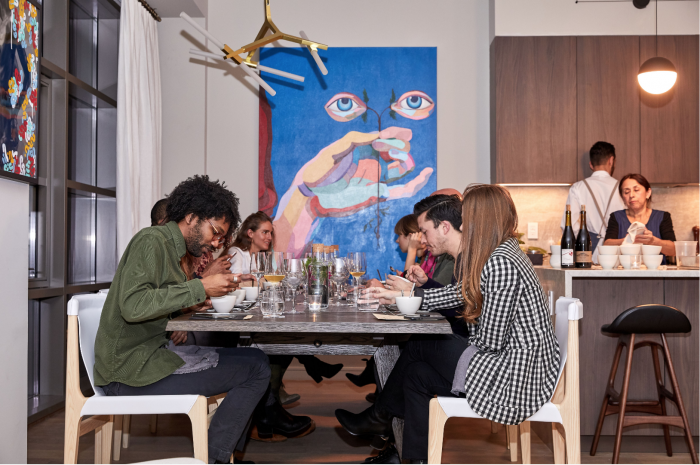
Hungry Root | Flatiron District Pop-Up
This e-commerce grocer debuted it’s first ever IRL pop-up this spring in the Flatiron district. At the space, one can find individual items the brand provides online. The store is as bright and charming as the brand and you’re sure to find something to snack on if you stop by.
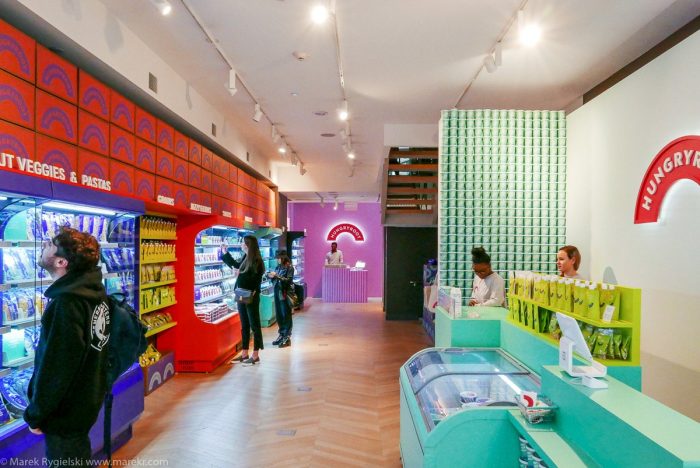
Market Line at Essex Crossing (Opening May13th) | Lower East Side Food Hall
The highly anticipated move of Essex Street Market has come and many of its legacy vendors are going with it. Previously known as NYC’s oldest public market, the move to Essex Crossing will make room for even more food vendors and businesses alike. In addition to plenty of food stops, ESM will also have retail, office, and apartment spaces. New to the market’s concept will be the Market Line, a developer-owned food hall that will be located on the lower level.
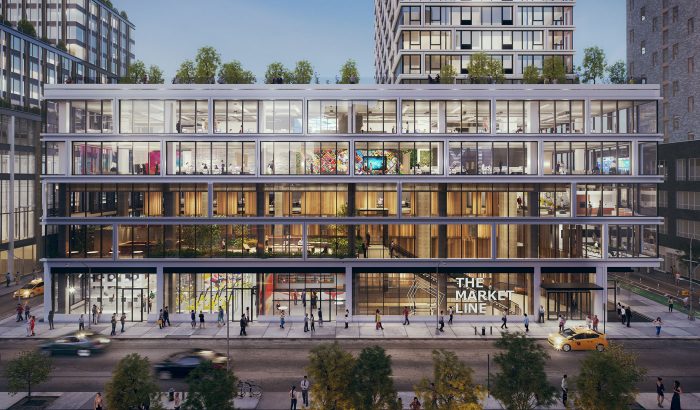
Mint Kitchen | Union Square Fast Casual
Mint Kitchen focuses on fresh Israeli dishes and snacks as a fast-casual concept. The 50-seat space is bright and open, finished with light wood and lots of greenery. A traditional taboon oven anchors an open kitchen decorated with emerald-colored tiling allowing customers to see the chefs in action.
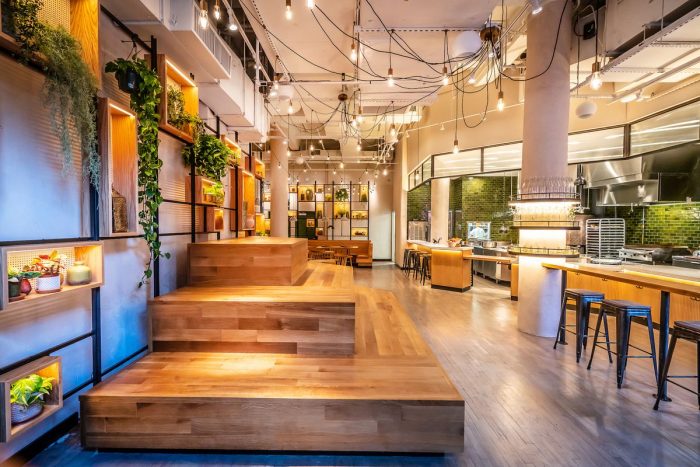
Gertie | Williamsburg Luncheonette With A Twist
Paying homage to an iconic grandmother, Gertie located in Williamsburg is a newly opened “luncheonette” serving old-school deli counter offerings with a 2019 twist. Here, silverware is presented in mason jars and vintage jars and a colorful mural compliments the naturally lit, 70s motif themed spot.
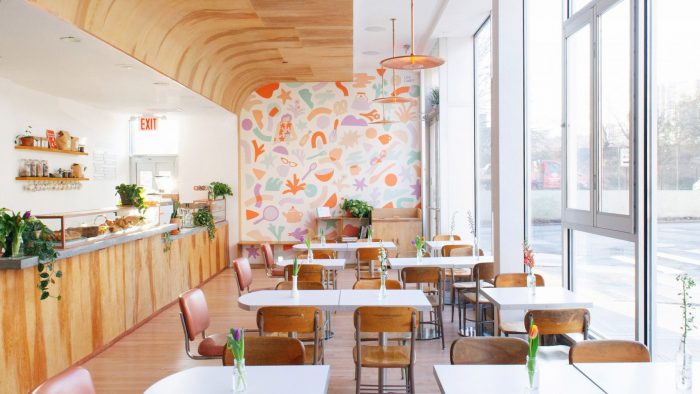
GupShup | Gramercy Hot Spot
The modern Indian theme trend has spread wide across NYC and GupShup located in Gramercy is rocking it in full force dishing 70’s Bombay vibes. In addition to tasting fusion heavy dishes, visitors can enjoy live music while surrounded by shiny décor, bold murals, and grand chandeliers.
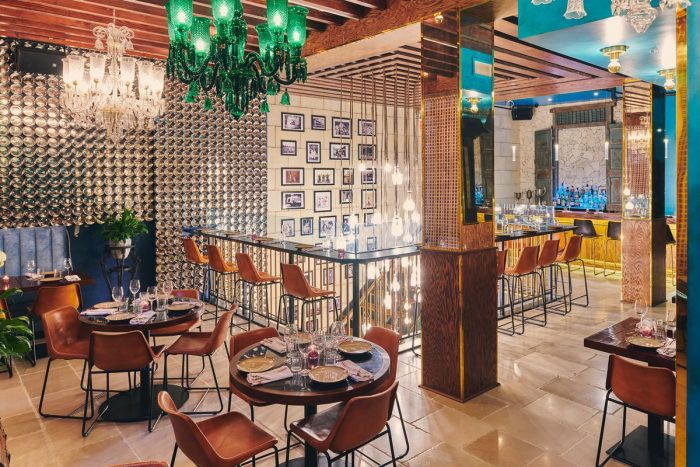
Junzi Kitchen | Manhattan Ambitious Fast Casual
Called the ”Chinese SweetGreen” Junzi is a fast-casual concept serving up Asian dishes that you may have never heard of. The company hopes to open 15-20 more locations in Manhattan in the next 3 years and hopes to transform the mainstream American perception of Asian cuisine.
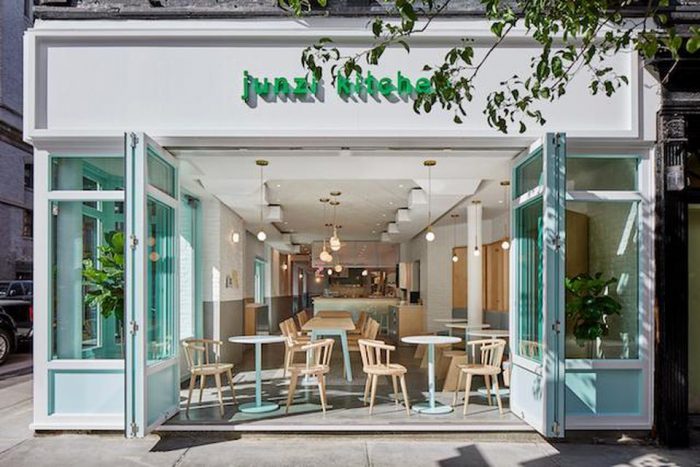
Mission Chinese Food Brooklyn | Buschwick Hot Spot
Featuring a stark concrete interior lit by LED tubes, MCF in Bushwick is nothing short of what you’d expect from this celebrity chef-owned restaurant. Inside you not only get to experience a unique style of cooking but an array of interesting short films produced by the restaurant’s design team.
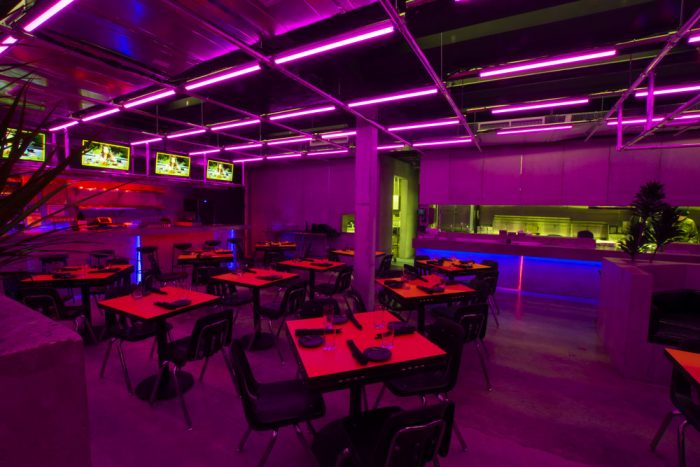
Mercado Little Spain | Hudson Yards Food Hall
This newly opened (and still in progress) food located at Hudson Yards aims to showcase all that Spain’s culinary scene has to offer. The 35,000 SF space has three full-service restaurants, plenty of space for tapas, wine, and coffee, retail space for a flower and dry goods shop, and over a dozen vendor stalls.
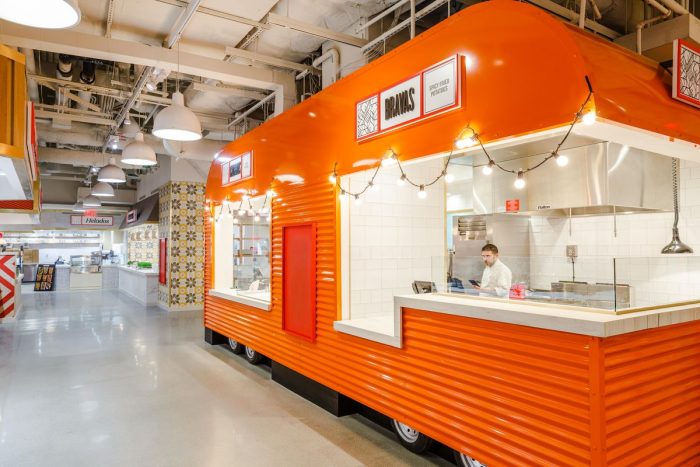
Teammate Spotlight: Meet Sean McCorry
Meet Sean McCorry, Vice President, National Business Leader in the Retail Practice and National Business Leader in the Hospitality Practice at NELSON Worldwide. Sean will lead the firm’s retail efforts nationwide, bringing over 25 years of experience managing global retail concepts and delivering premium brand concepts with a return on investment.
Q: If you had 3 words to describe your brand, what would they be?
Original, Reactive, Empathetic
Q: Where did you grow up?
I grew up in a town in England call Bristol, and its still one of my favorite places. It’s a big city that never really feels big, incredible eclectic mix of people and the best coffee shops anywhere.
Q: What is a quote or mantra you live by?
“What you allow is what will continue.”
Q: What is an underrated food that you think deserves more hype?
Hot Pot! It’s wild food and I love it!!

“NELSON Worldwide will allow me to mentor creative designers and align on their conceptual thinking, ensuring their projects are brought to life in an authentic and brand-relevant manner.” – Sean McCorry
Research Highlights the Impact of Plants and Living Walls on Workplace Productivity
More and more workplaces are being designed to prioritize employee wellness. Even better, changes made in the office that increase wellness and result in better performance are a win-win. New research from Finnish indoor nature technology company, Naava, showed that biophilic design in a workspace has significant health benefits and ultimately lead to better performance – employees make 43% fewer mistakes in the presence of plants or living walls. Browse the images below to see how our teammates transform the workplace by introducing biophilic influences.
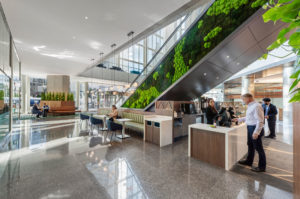 One Financial Center | Boston, Massachusetts
One Financial Center | Boston, Massachusetts
“We are much more creative and smarter outdoors. In nature, we think more clearly, solve problems more efficiently, and are less prone to stress factors. Still, we choose to spend 22 hours a day indoors,” said Aki Soudunsaari, Co-founder at Naava. “On the contrary, most workplaces today are entirely uninspiring at best, and, at worst, they are actually detrimental to our health. They bombard our senses with stress-inducing stimuli like unnatural lighting and artificially sterilized air – we’re starved of the therapeutic effects of nature that we as humans are genetically programmed to thrive in.” (Boston Real Estate Times)
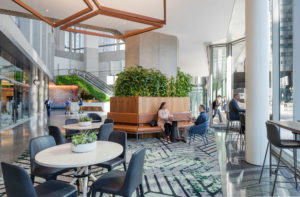 One Financial Center | Boston, Massachusetts
One Financial Center | Boston, Massachusetts
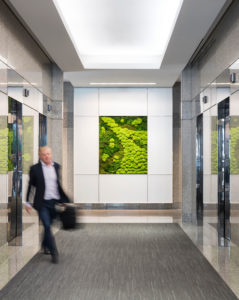 One Financial Center | Boston, Massachusetts
One Financial Center | Boston, Massachusetts
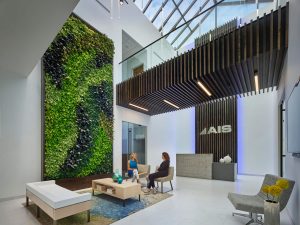 AIS Corporate Headquarters | Leominster, Massachusetts
AIS Corporate Headquarters | Leominster, Massachusetts
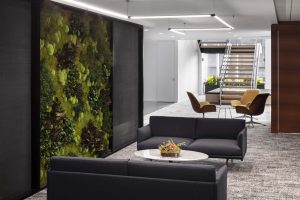 Bryan Cave Leighton Paisner | Chicago, Illinois
Bryan Cave Leighton Paisner | Chicago, Illinois
Victoria Dimou Joins NELSON Worldwide as Vice President, Brand Identity & Communications
NELSON Worldwide welcomes Victoria Dimou as Vice President, Brand Identity & Communications. In her new position, Victoria will lead and mentor the Environmental Graphic Design team, supporting the team’s efforts and growing its impact across the firm.
Inspired by NELSON’s far-reaching scope of projects and dynamic work culture, Victoria brings over 20 years of creative experience to her new position as Vice President, Brand Identity & Communications. After graduating from Parsons School of Design with a Bachelor of Arts in Graphic Communications, Victoria joined Elizabeth Arden. There, she honed her design and technical skills working alongside industry experts, marketing leaders, talented creatives, and production gurus. She then brought these skills to Timberland, helping grow it from a footwear company into a lifestyle brand while leading a best-in-class in-house creative department. From the frozen Yukon to the shores of Cape Town, she led global photo shoots for the brand, distilling complex business needs, product and marketing insights into powerful creative direction and bringing that vision to life.
Victoria’s passion for impactful and aesthetic design materializes in effective communications across all consumer touchpoints. Her broad skillset and people-led, empathetic leadership style aligns seamlessly with NELSON’s pursuit of transforming the human experience.
